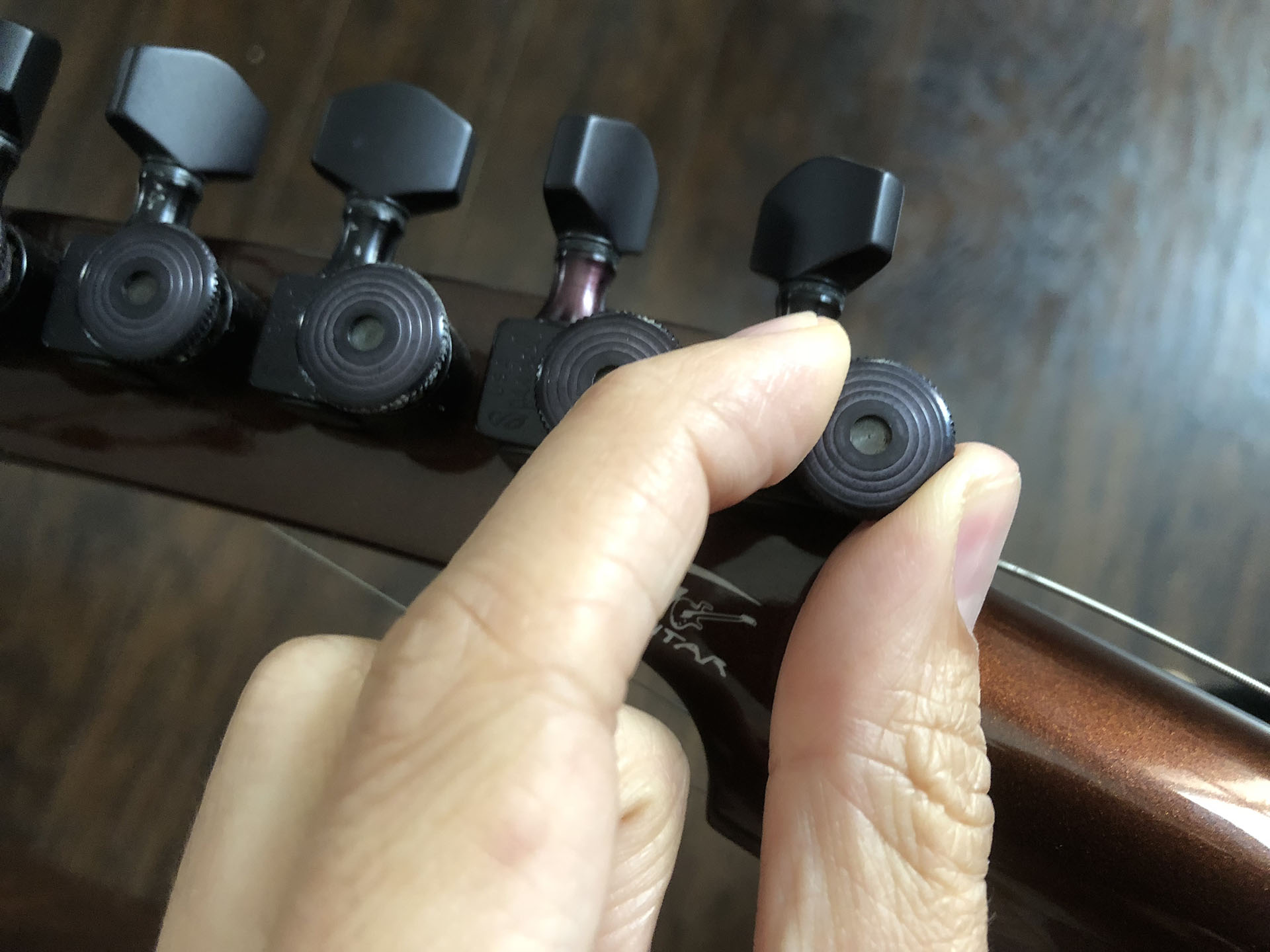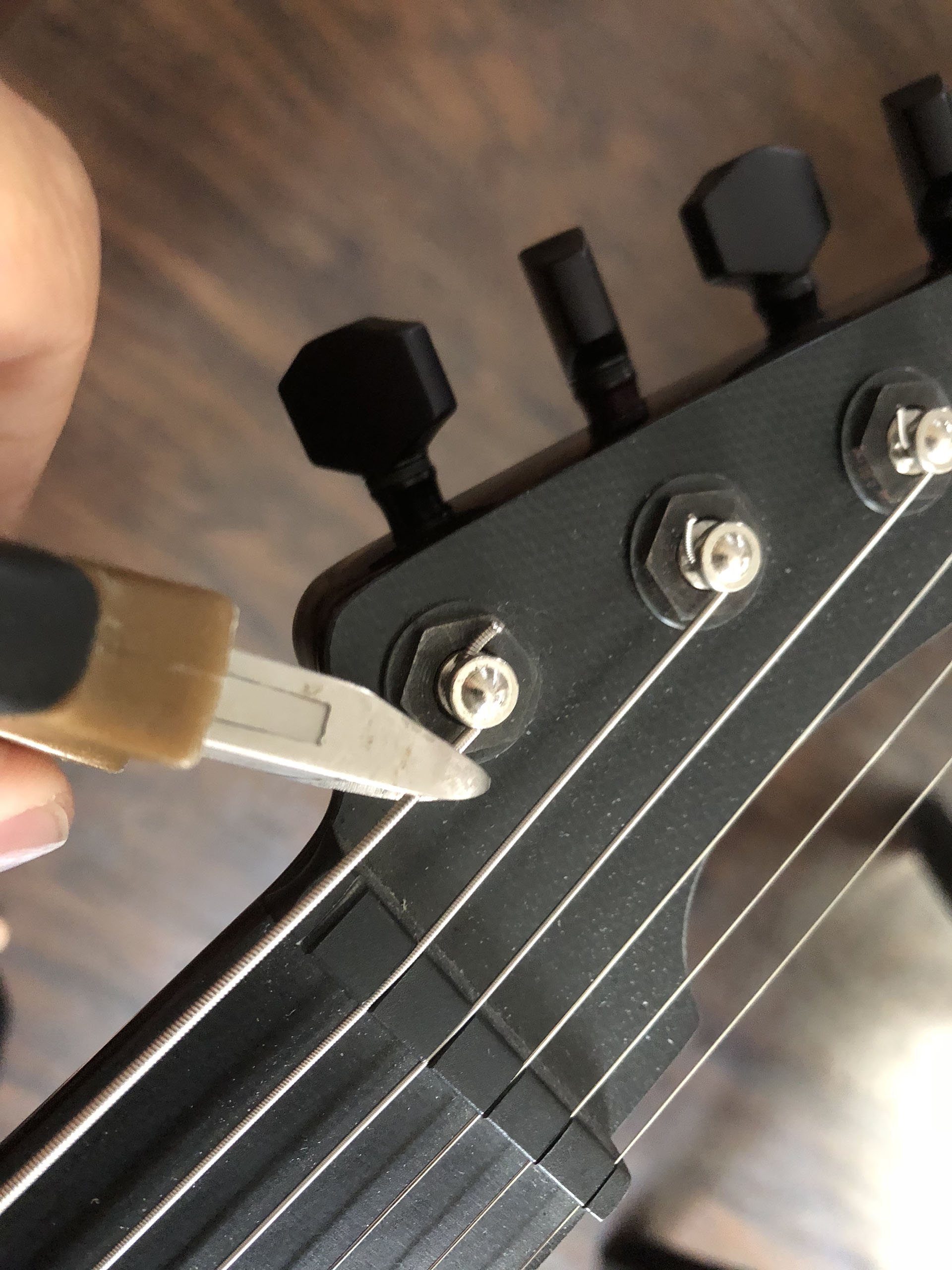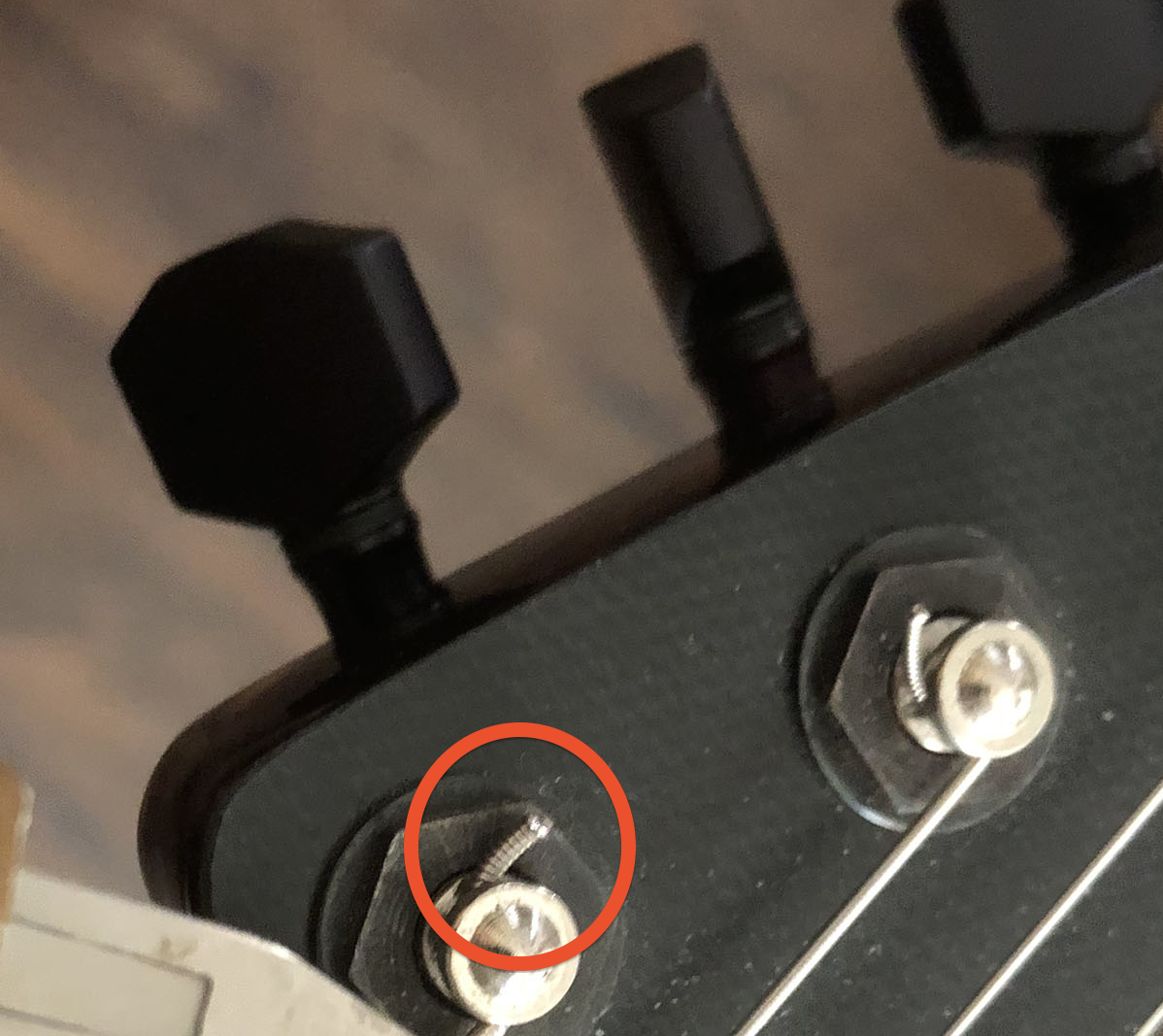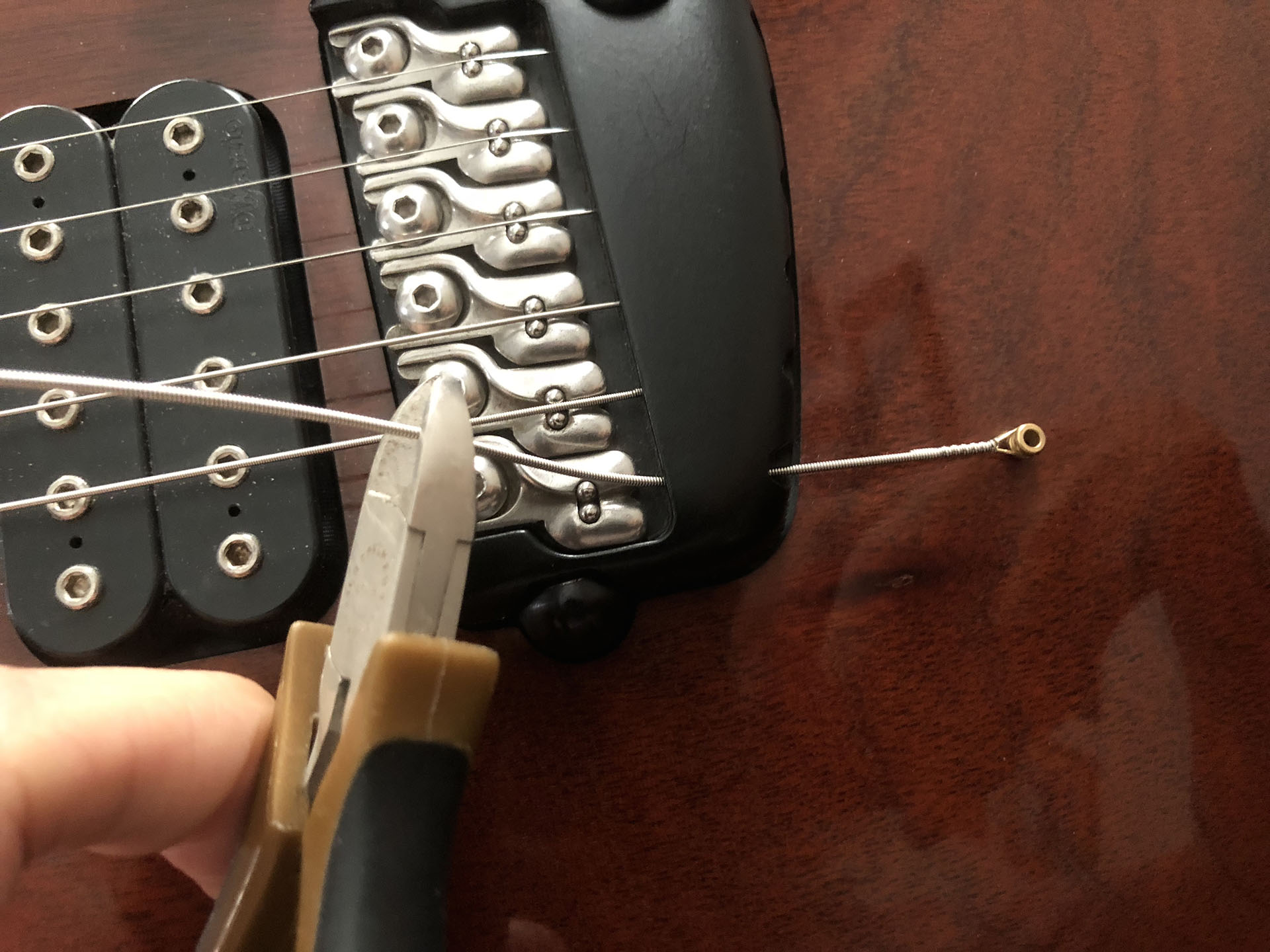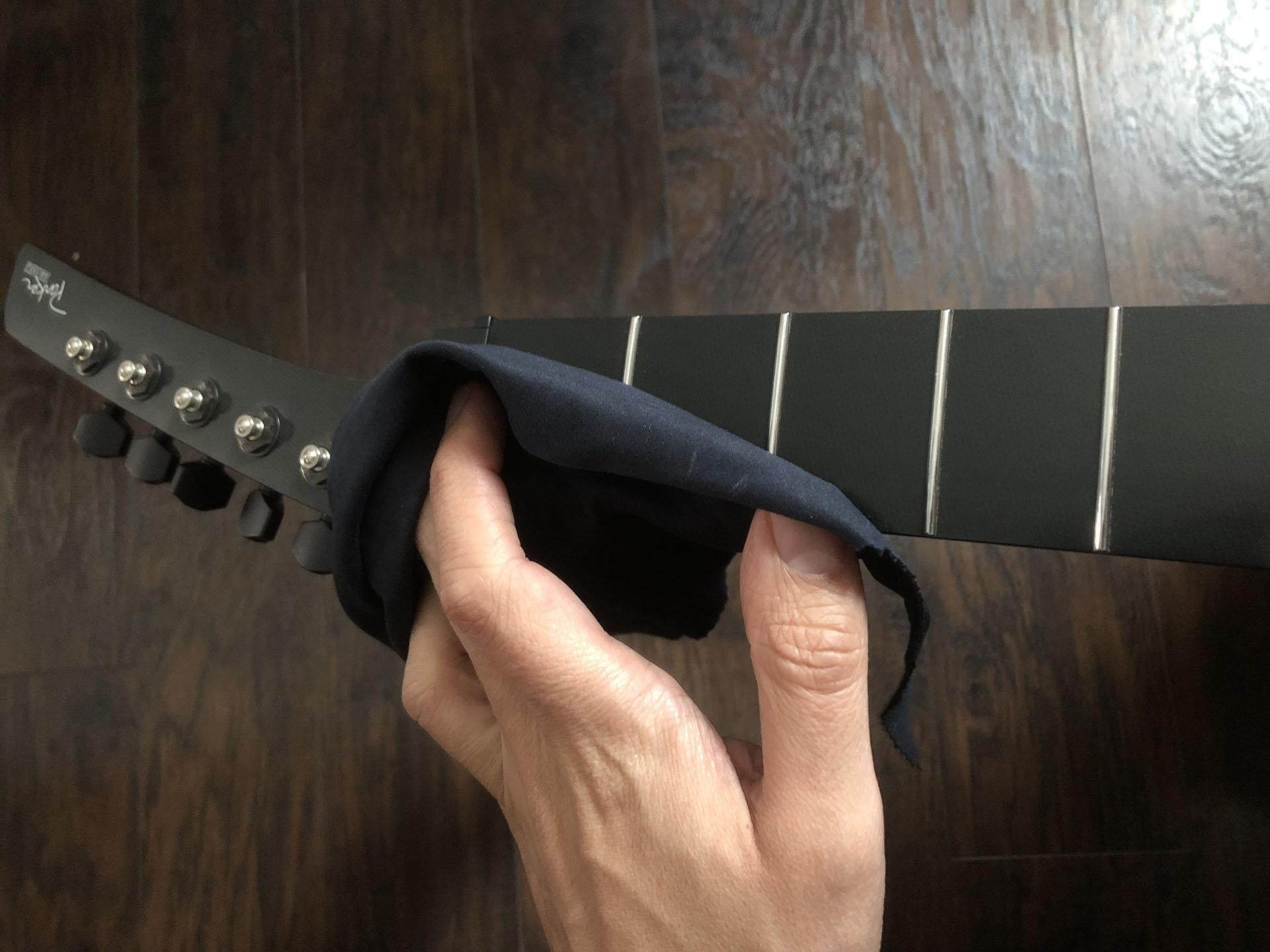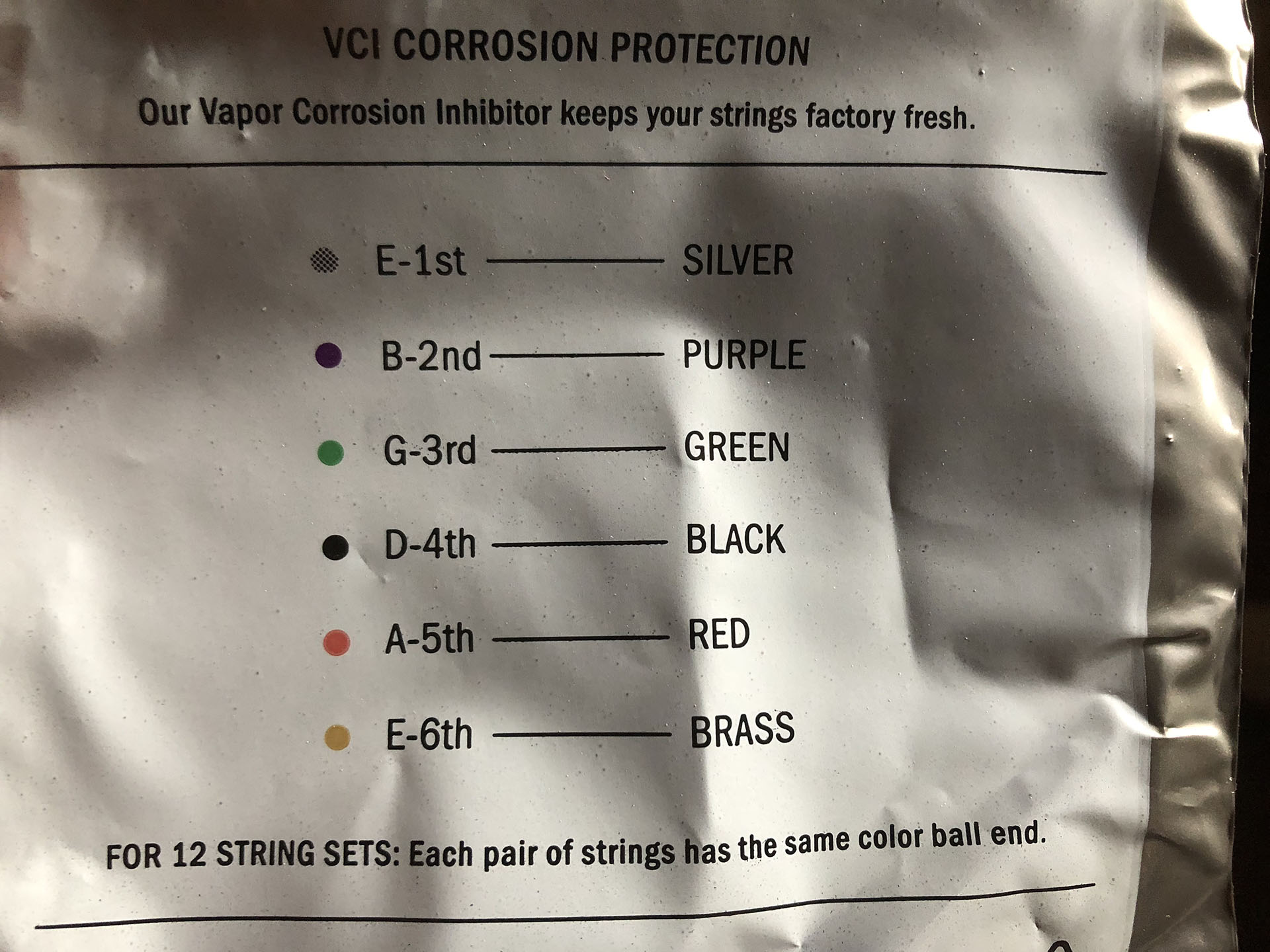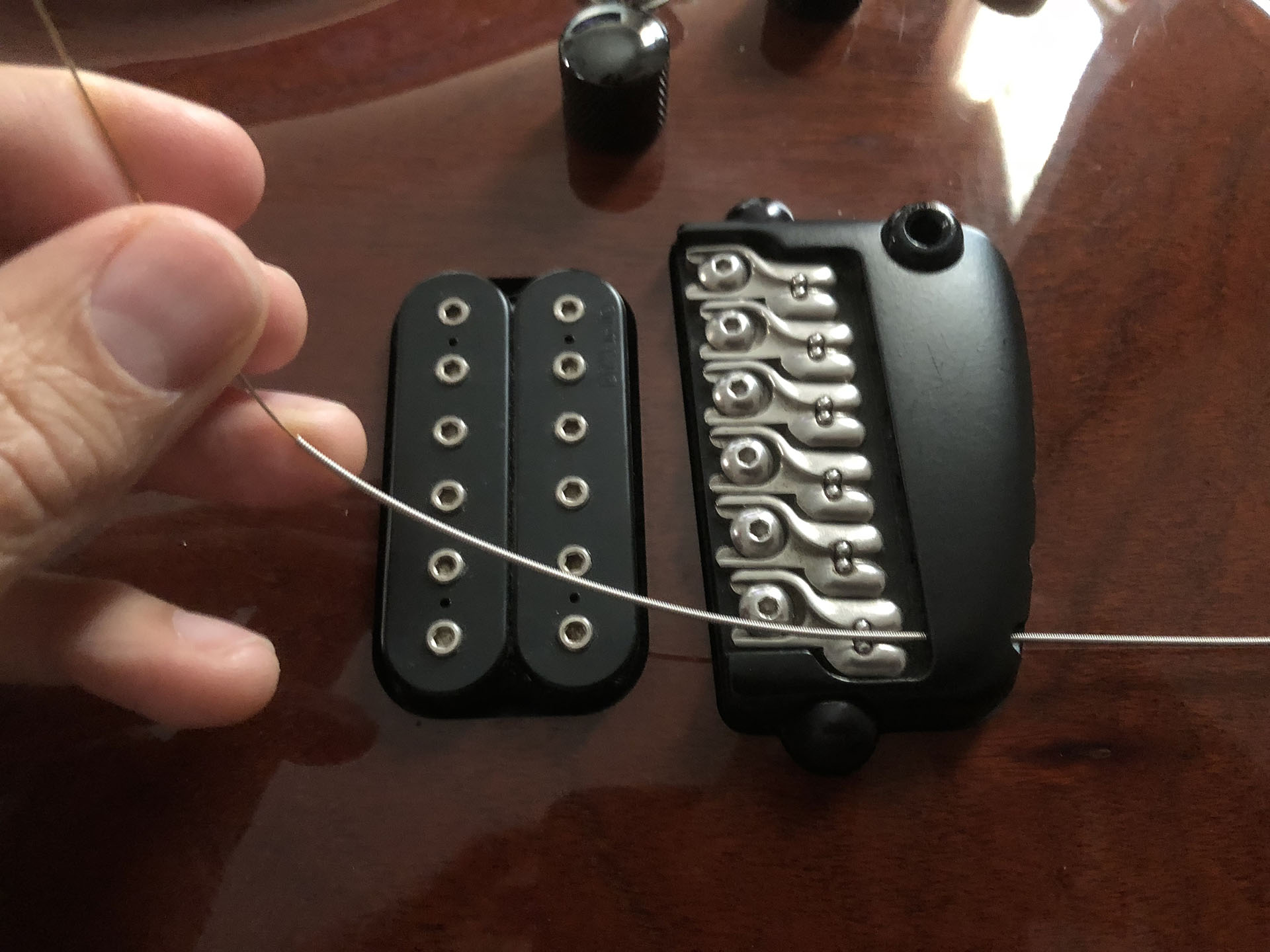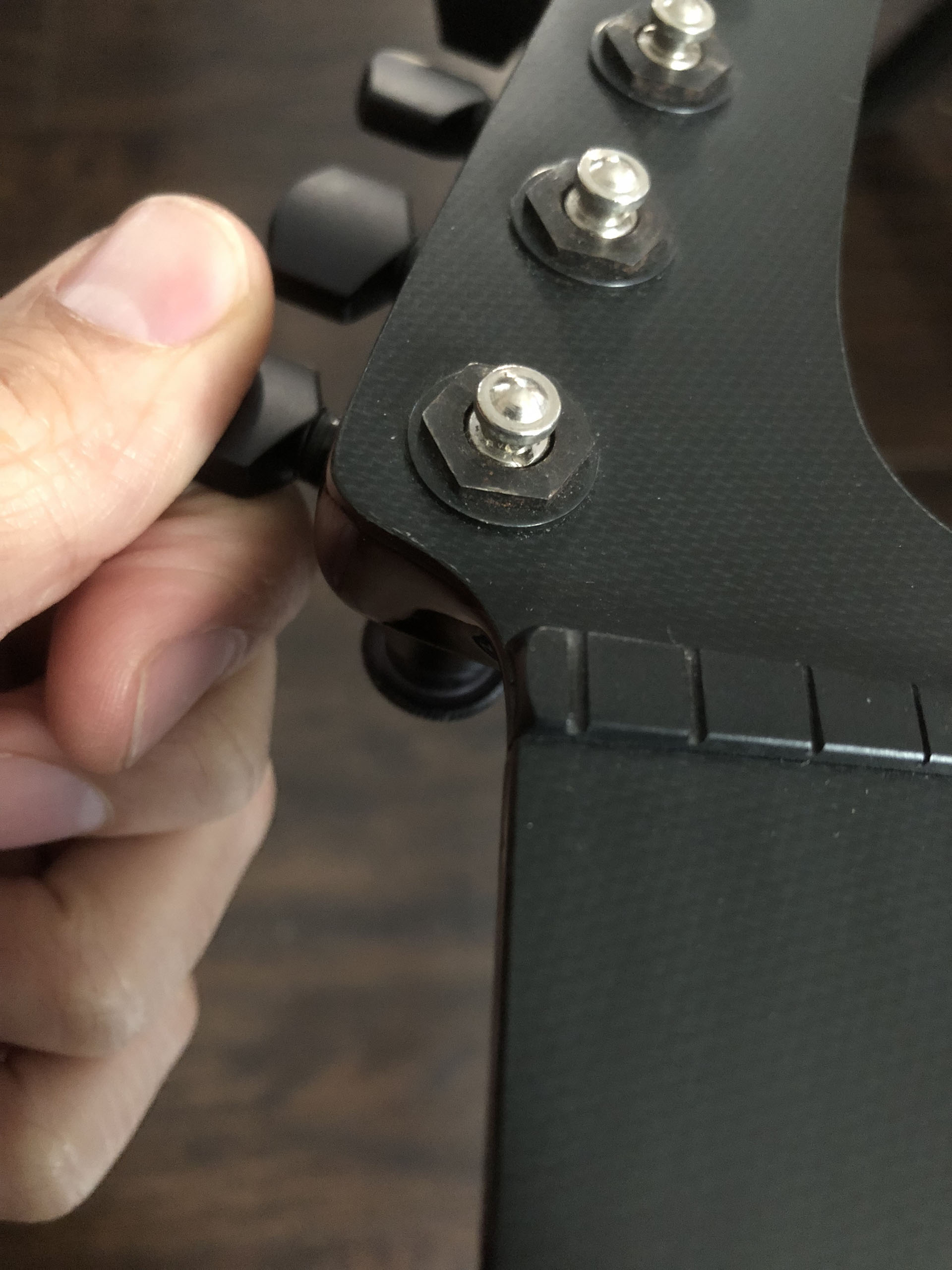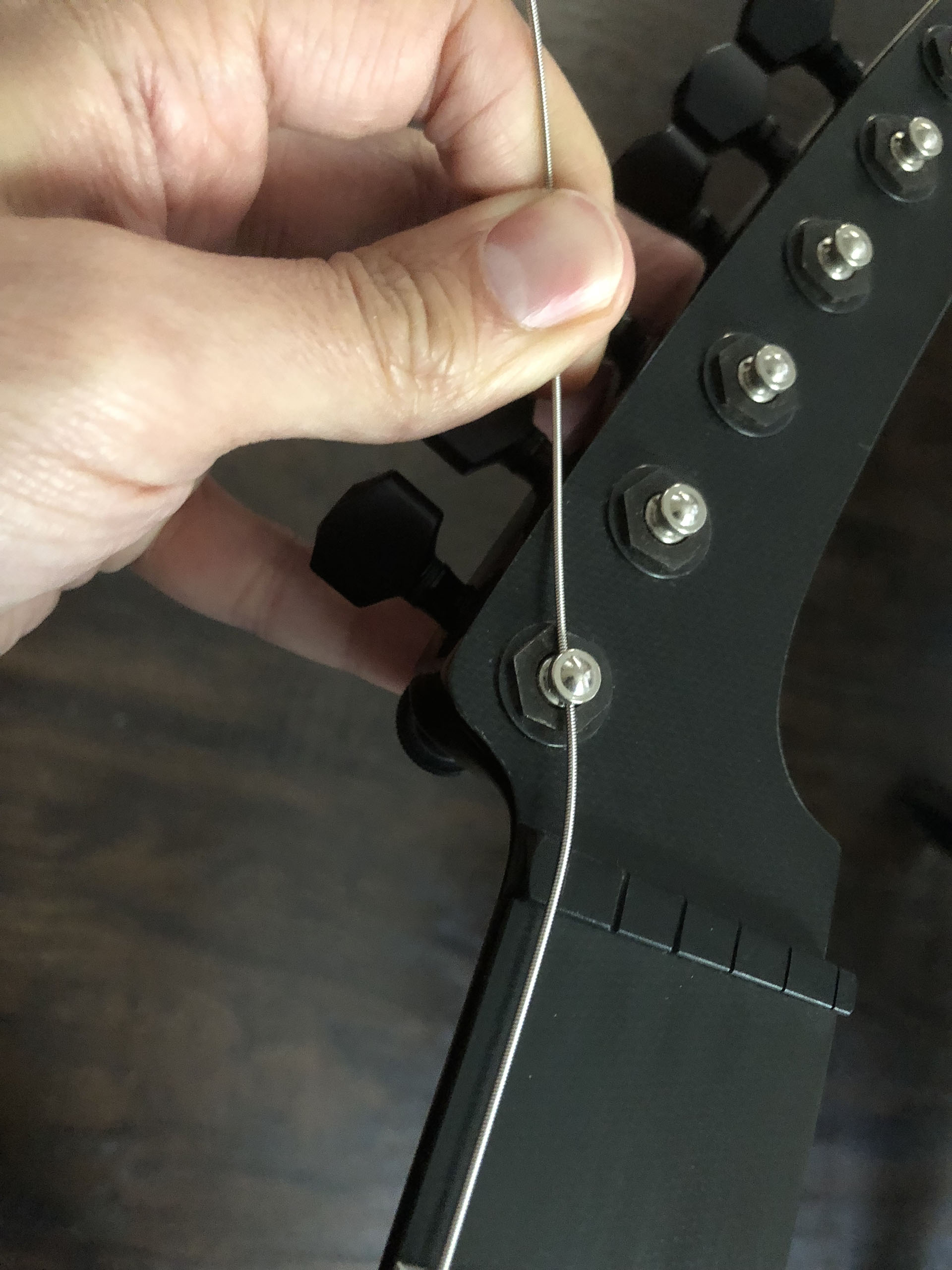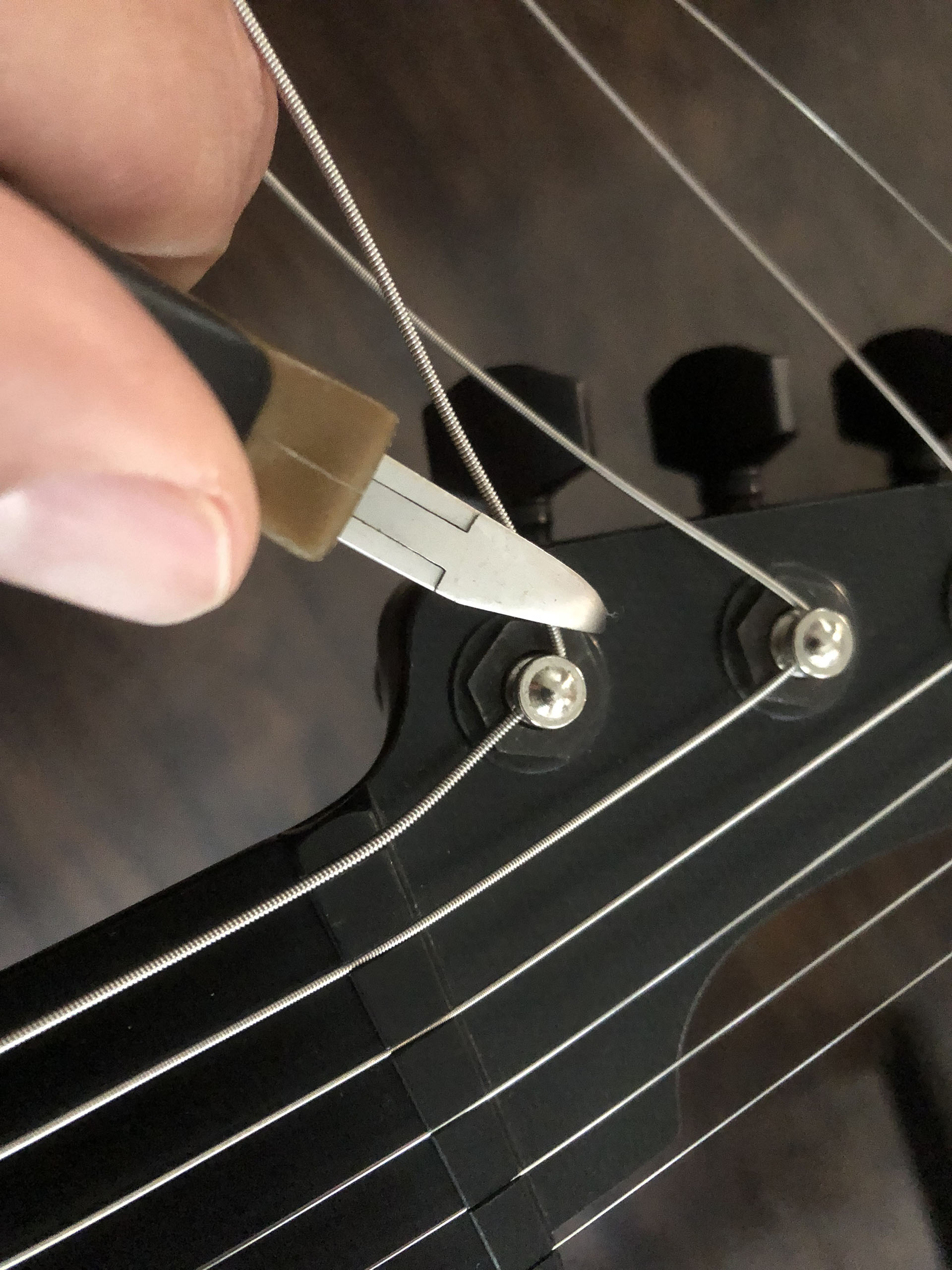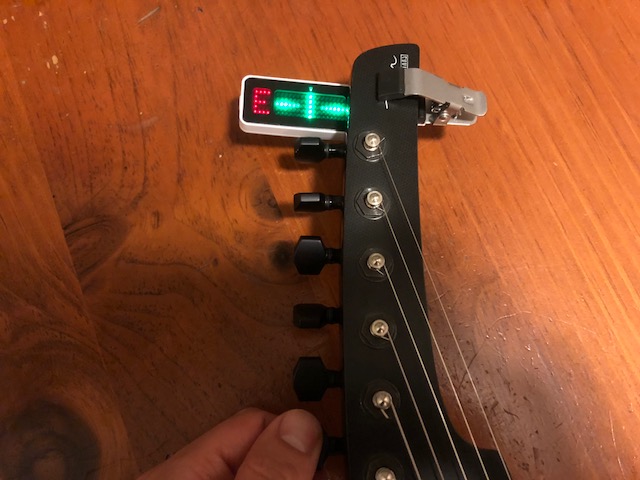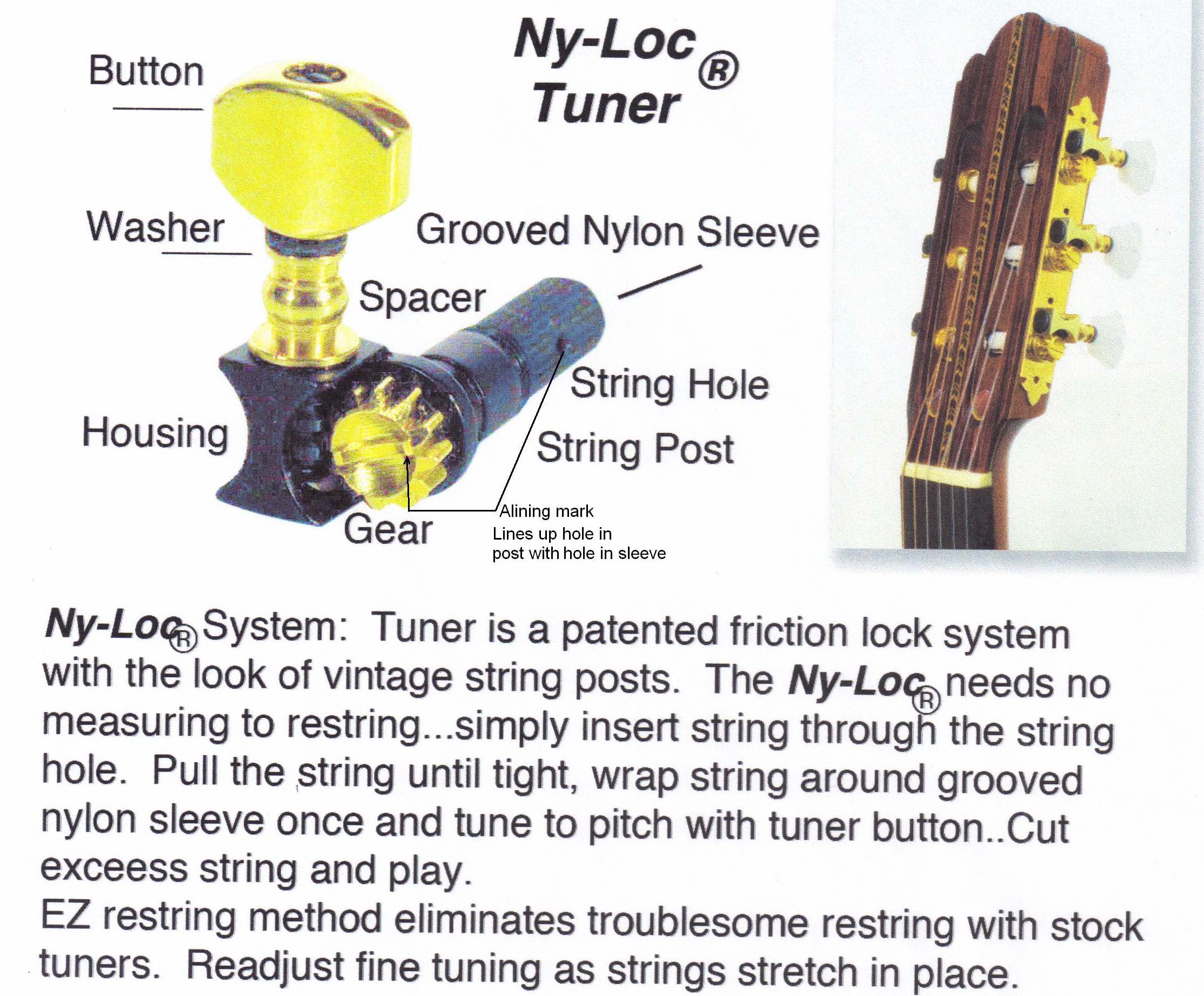How to Change a String (with Locking Tuners)
From vjmedia
Important: Go slowly with every part of this process in order to minimize the risk of damaging the instruments, cutting yourself, or poking your eye out with an old guitar string. Place the guitar on a flat surface that is covered with a towel or other soft surface.
Special Note: Do not use any solvents, cleaners, oils, or other things on fretboards while changing the strings; for Parker Fly guitars, you may use a little water on a microfiber cloth to clean the fretboard.
Supplies Needed
- guitar or bass with old strings
- new strings (located in lab on pegboard in a bin labeled "new strings")
- string cutters (located in lab on pegboard)
- needle-nose pliers (located in lab on pegboard)
- microfiber cloth (located in lab on pegboard)
- tuner (located in lab on pegboard in bin nearest door)
Remove the Old Strings
Detune the lowest string with the tuning peg until it drops as low as it can go
The media player is loading...
Loosen the locking mechanism on the back of the tuning peg as much as it will loosen
Carefully cut the end of the string with string cutters above the hex plate that holds the tuning peg into the headstock
Carefully pull the string out of the hole with needle-nose pliers (Do not use anything sharp!)
Gently push the string 1 inch through the hole of the bridge
Cut the string above the bridge
Very gently pull the remainder of the string through the bridge
Repeat the process for all other strings
Throw away the old strings including any clippings
Gently wipe down the fretboard and body with a dry microfiber cloth removing any dirt seen; do not use any solvents, oils, or other chemicals on the fretboard and do not scratch the fretboard
Put on the New Strings
Wash your hands with soap and water; dry your hands
Take the lowest string out of the new package of strings
Insert the new string through the hole of the bridge
Turn the tuning peg so that the hole aligns straight with the angle of the string
Put the string through the tuning peg hole
While pulling the string lightly, tighten the locking mechanism on the back of the tuning peg
Repeat the process for all other strings
Tune the New Strings
At the tuning peg, pull the excess string from the lowest string down to make a crease
The media player is loading...
Cut the excess string just above the hex plate that holds the tuning peg into the headstock
Tune the string to pitch using a tuner
Repeat the process for all other strings
Tune all string to pitch from lowest to top until all strings are in tune
Clean the microfiber cloth by running it under water for a few minutes
Tying Strings for Guitars without Locking Tuners
Additional Info
Here are additional specialized instructions for changing strings:
Classical strings
Classical strings with Sperzel Ny-Loc tuners
Strings in the Lab
These are V.J.’s recommendations for strings and what we use in the lab:
Electric strings
- D'Addario EXL110 .010 gauge (10-46) strings
Acoustic strings
- D'Addario EJ26 Phosphor Bronze .011 gauge strings
Nylon strings
- La Bella 2001MH Medium-hard tension strings
- La Bella 413P Studio Professional Recording Strings
Bass strings
- Fodera 65-125 nickel strings
